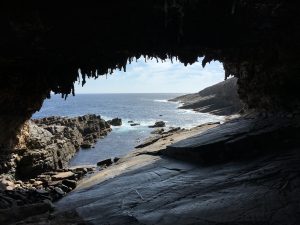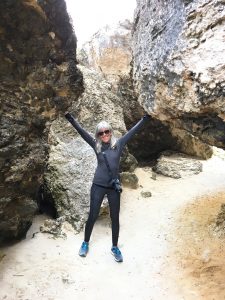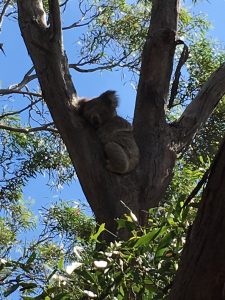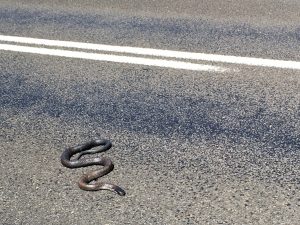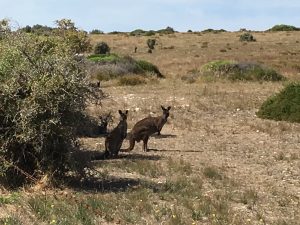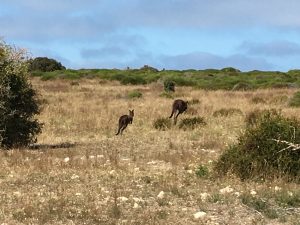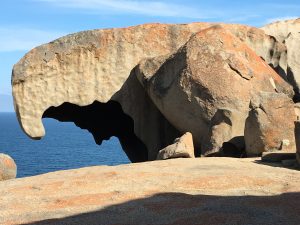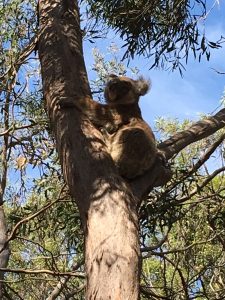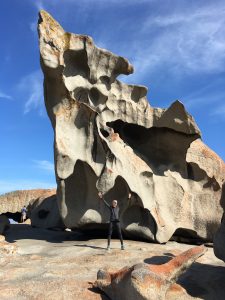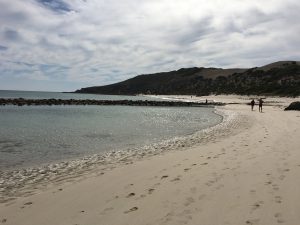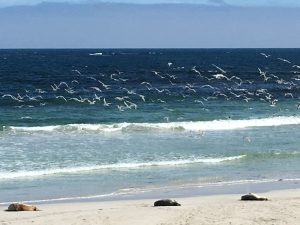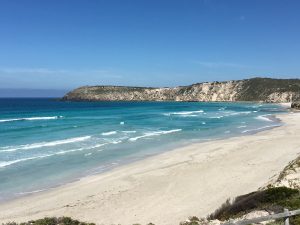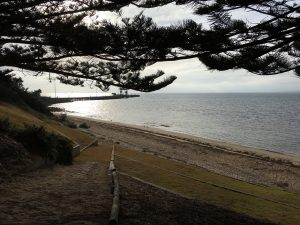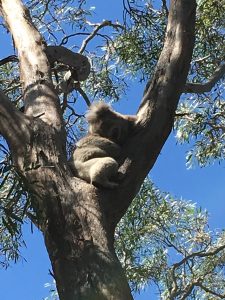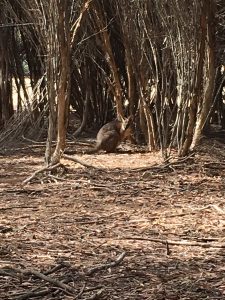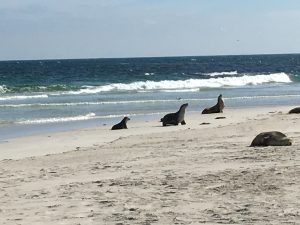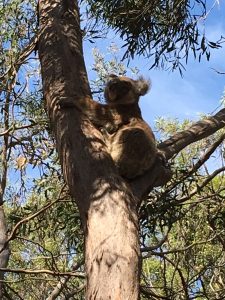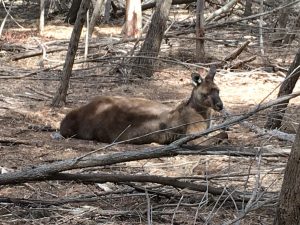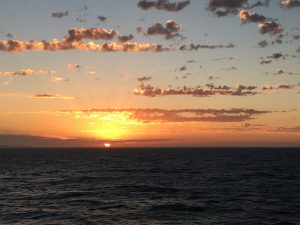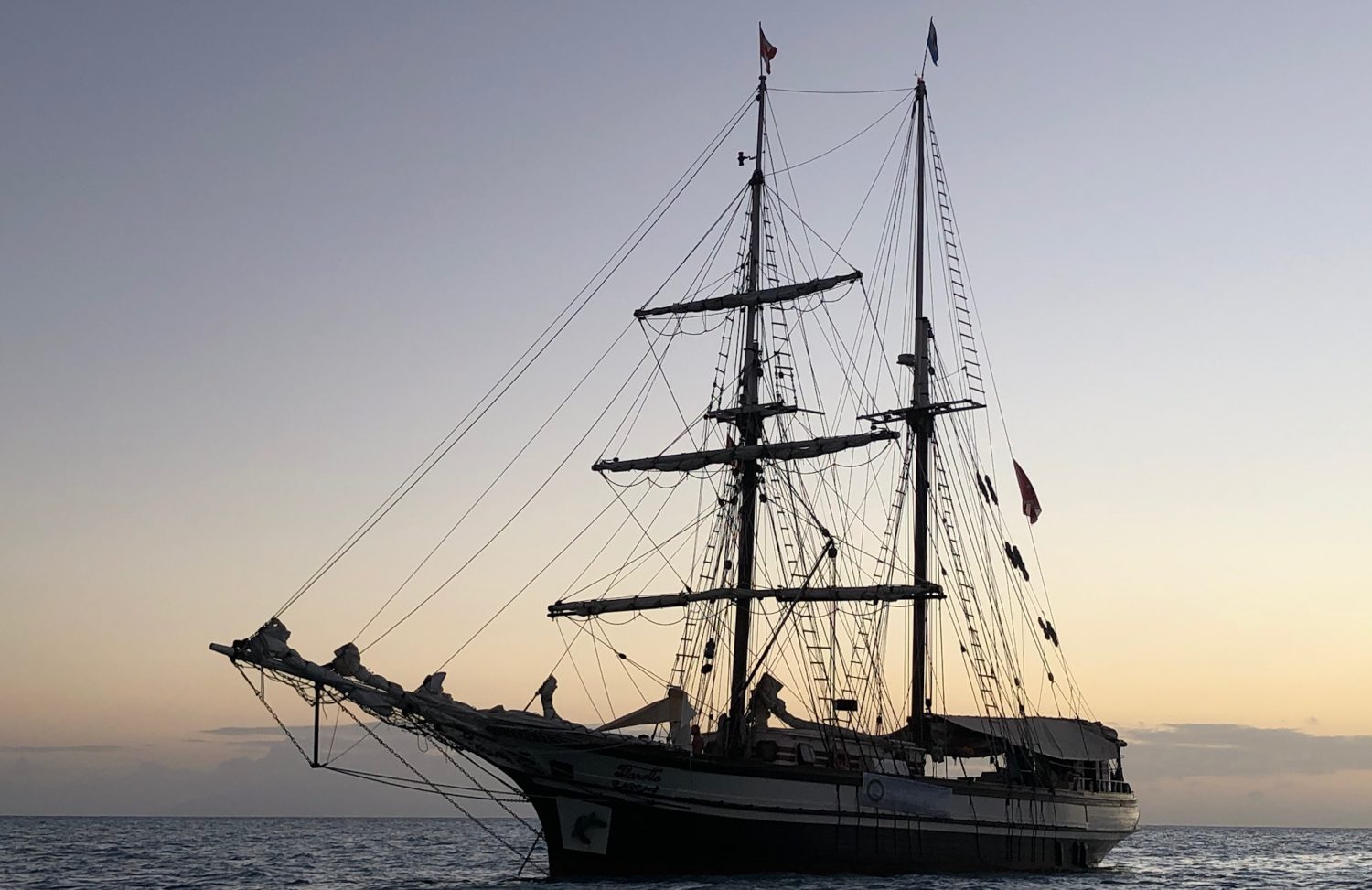Just 45 minutes by ferry (very much like the car ferries from Wood’s Hole to Martha’s Vineyard) from Port Jervis is Kangaroo Island, very much a nature-based destination, which is why I chose a two day/one night tour to see and explore it. Once connected to the mainland (2,000 years ago), the 155 km long/50 km wide island is home to about 4,600 people, tens of thousands of kangaroos, hundreds of thousands Tammar wallabies, and fur seals, sea lions, goanna, echidna, and many subspecies of birds also found on the mainland. About 1/3-1/2 of the land is considered conservation land, whether run by national parks, or allocated to owners who agree to keep it pristine, so KI is wonderful wilderness.
It appears that before it was separated from the mainland by the Backstairs Passage there may have been aboriginal tribes living there, but it was abandoned by them at some point, and mainland indigenous people call it Land of the Dead. It was named Kangaroo Island by Captain Matthew Flinders in 1802, when he came ashore as part of a mapping expedition and found hundreds of kangaroos, much needed as meat for his starving crew. A French crew was also mapping the southern coastline of Australia and Flinders shared information with Captain Nicholas Baudin, who then went on to map the southern coast o the island. As a result many of the names of the places in the south bear French-sounding names.
The first settlers were sealers, convicts and runaway sailors who south refuge in the early 1800’s. They led a self-sufficient life. In 1834, The South Australian Company was established by an Act of Parliament in Britain, with a charter to establish the first colony somewhere along the coast between the Great Australian Bight (which lies between Western and Southern Australia) and Port Phillip Bay (now the Melbourne area). At first this free European settlement was on KI, but soon moved to what is now Adelaide. In 1982 Reeves Point was placed on the South Australian Heritage Register, a testimony to the hopes and aspirations of the early pioneers.
In the early days, the industry of the island was multi-fold — sealing, some salt mines, distilling eucalyptus oil, sheep (wool and meat) and farming. Many of these still remain, but new industry includes rare Ligurian honey, lavender farms, beef cattle and wine. And tourism. The wildlife and gorgeous views and beaches draws the tourists both for one- and extended-day experiences.
My tour group of 8 traveled over to 2 days to the best wildlife spotting locations, and were able to see what I came to call the Big 5 of KI: Kangaroos, which are a subspecies of the Eastern Grey. They are shorter, stockier, more chocolate brown than grey, and with heavier fur, developed to both manage the low bush across the island, and the full 4 seasons. The Tammar wallaby is the smallest of the wallaby species, who must spend a lot of time under cover as they are prime eating for the wedge-tailed eagle which prey on them. The long-nosed fur seal is a relative of the NZ fur seal, and for many years was called that, but Aussie pride prevailed and they are recognized as their own species. The Australian Sea Lion makes it’s home on the southern shores and is the 3rd-largest colony in the world. They are endangered and so protected even from tourists. (Maybe especially from tourists). And lastly, the koala. So damned cute. Their numbers have increased in recent decades and because there are only 3 types of eucalyptus that they are able to eat, we can see damage done to the groves of those types of trees. The conservationists are busy planting more across the island. Because their diet is low in protein they pretty much sleep most of the time — we were able to get a couple of the ones we found wedged in the branches to wake up for a photo, but mostly they simply hang about, avoiding the predators on the ground.
We also spotted the wedge-tailed eagle, the sea eagle (very rare), a Rosenberg Goanna, and a still-alive but dying black tiger snake on the road that we helped off the road to return to nature. There was a fair amount of road kill — mostly wallabies (walla-was?), goanna, and a few kangas, in some cases leaving behind an intact skeleton! The beaches were wonderful — one was hidden and involved climbing through some rocks to reach the beautiful spot. And the lookouts from Admirals Arch to the fur seal colony was a treat. Also in Flinders Chase National Park were the Remarkable Rocks — high a top a hill, with shapes and carving that almost looked like a man-made art installation. We had spent the night in the largest town on the island — Kingscoat, population 1,800 — where sometimes Little Penguins appear (not that day for us), and where a man feeds the enormous pelicans daily.
At the end of the second day it was back to the ferry (for a beautiful sunset at sea), and a 2 hour bus ride back to Adelaide. Both days were full of amazing vistas and wildlife. A great little adventure.
